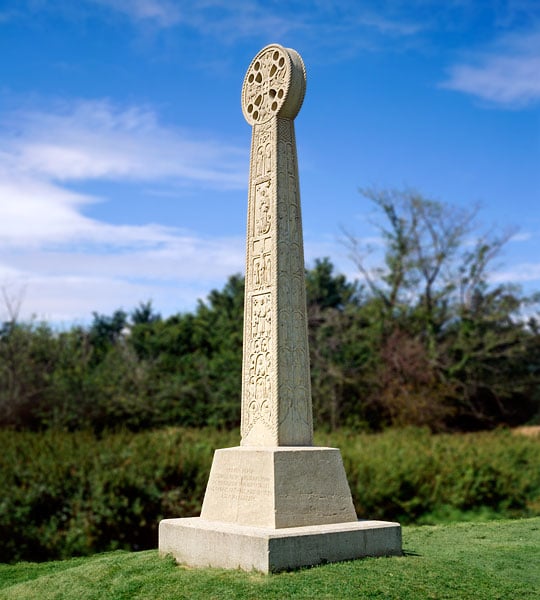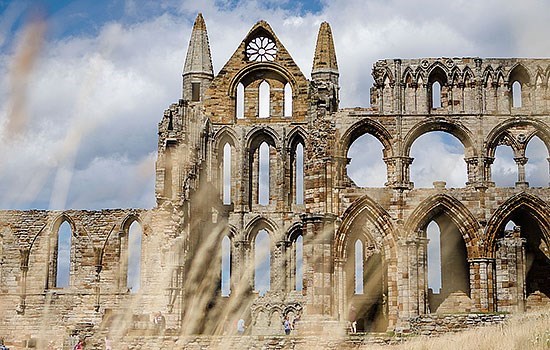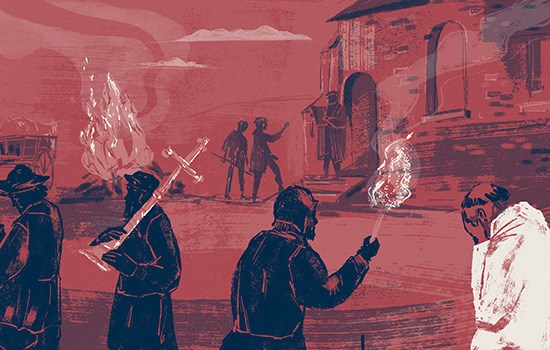History of St Augustine’s Cross
St Augustine’s Cross stands close to the site at which an important meeting between St Augustine and King Æthelberht of Kent is said to have taken place nearly 1,500 years ago.

History
The cross was commissioned in 1884 by Granville George Leveson-Gower, 2nd Earl Granville, at the time Minister for Foreign Affairs and Lord Warden of the Cinque Ports.
He was inspired to erect it after hearing the story of a massive oak tree felled within living memory and known as the Augustine Oak, one of a group of trees fringing a field which he owned.
Local Legend
According to local legend, under this oak in AD 597 the first meeting was held between King Æthelberht and the monk Augustine, newly arrived from Rome.
Augustine had recently landed on the Isle of Thanet, having been sent by Pope Gregory to convert the Anglo-Saxons to Christianity and thereby re-establish the faith in a country in which it had faded with the fall of the Roman Empire.
Not far to the south-east was the stream in which, the legend tells us, Augustine baptised his first convert and which subsequently became known as St Augustine’s Well.
Tradition holds that Æhelberht was converted to Christianity and Augustine baptised him on Whit Sunday in AD 597. On Christmas Day of that year, according to a papal letter of AD 598, more than 10,000 baptisms were carried out.
Description
Lord Granville chose to commemorate the meeting between Augustine and Æthelberht with a stone cross in the early Christian style, and as a model he selected the 8th–9th century crosses at Sandbach, near Crewe, Cheshire.
The cross carries carvings illustrating the Christian story on its west side: the Annunciation, the Virgin and Child, the Crucifixion and the Transfiguration. On the north side are the 12 apostles, on the south side 14 early Christian martyrs. The east side has runic ornamentation which continues nearly halfway down the shaft, the design then breaking into panels showing St Alban, St Augustine and Æthelberht.
A Latin inscription commemorating the meeting of Æthelberht and Augustine, composed by Dr Liddell, Dean of Christchurch, is carved into the base of the cross.
This can be translated as:
After many dangers and difficulties by land and sea Augustine landed at last on the shores of Richborough in the Isle of Thanet. On this spot he met King Æthelberht, and preached his first sermon to our own countrymen. Thus he happily planted the Christian faith, which spread with marvellous speed throughout the whole of England. That the memory of these events may be preserved among the English G G L-G Earl Granville, Lord Warden of the Cinque Ports has erected this monument, AD 1884.
Further Reading
Gameson, R (ed), St Augustine and the Conversion of England (Stroud, 1999)
Hawkes, J, The Sandbach Crosses: Sign and Significance in Anglo-Saxon Sculpture (London, 2002)



